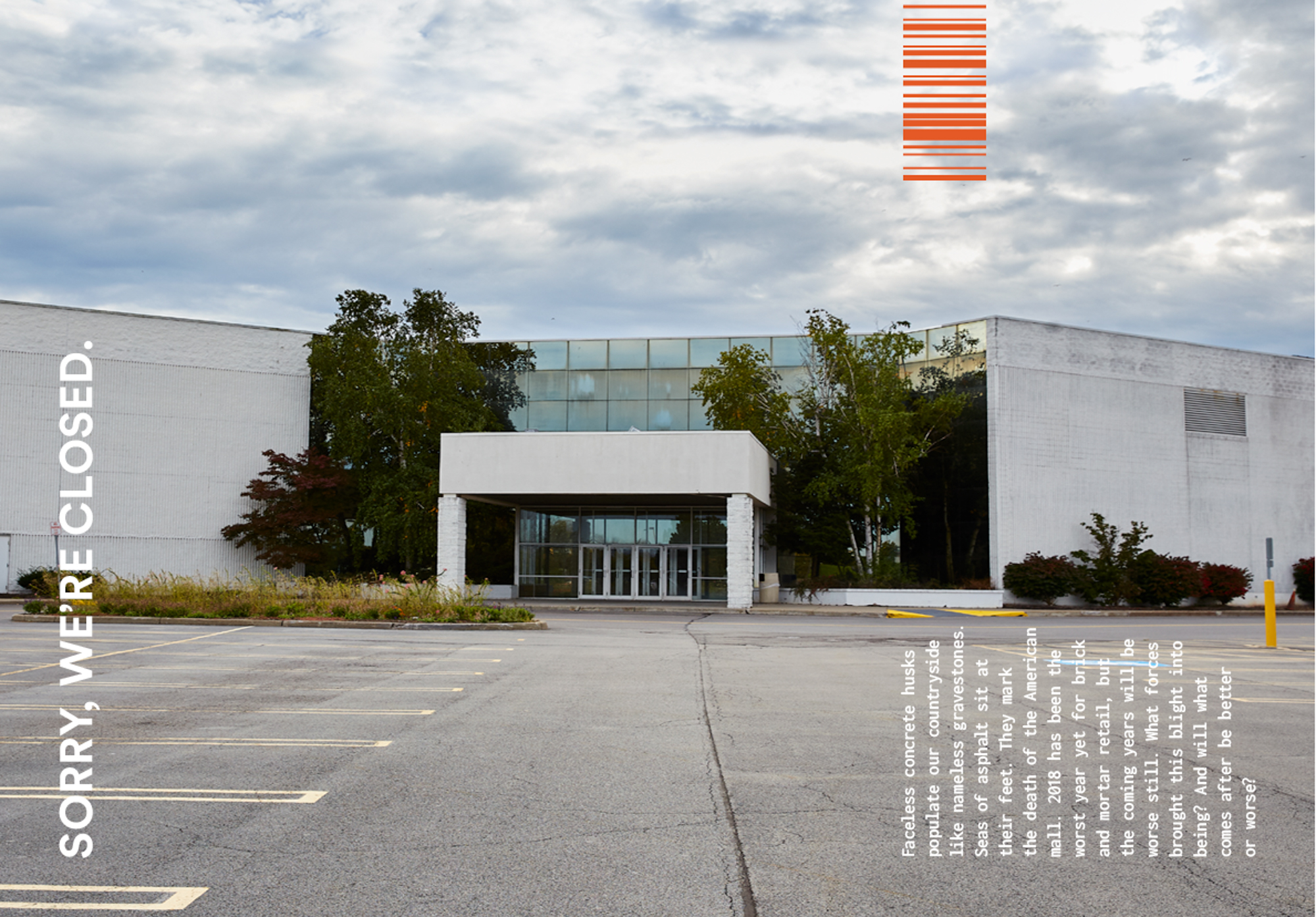SORRY, WE'RE CLOSED

The obituary of America's retail begins with its birth.
By the ‘80s, the sparkling air-conditioned halls of the shopping mall replaced Main Street as the platonic ideal of American life. But in the years following the Cold War, the economy began to change and malls started to feel the squeeze. In their desperation, big box stores sold their assets to private equity firms who in turn bled them dry into bankruptcy. The Great Recession was the breaking point. When mall anchor stores like Macy’s and JCPenney began to close, the stores around them also began to fail.¹ More bankruptcy leads to more equity buyouts and the cycle continues. Even the high churches of consumerism stand no chance against this uglier, more brutal species of capitalism.

Through one lens, it’s hard to care about the consequences of a business that couldn’t modernize — nobody’s crying over losing their local Radio Shack or Sears. But the human cost of the retail apocalypse is staggering: 64,370 retail jobs were cut in 2018 alone. Many expect displaced retail workers to work in the newly created warehouse jobs, but retail jobs are very different than warehouse jobs in terms of safety and physical workload. This means that only a fraction of the jobless can easily transition to warehouse work.
Despite their positive reputation as job creators, Amazon’s warehouses offer miserable working conditions. Workers are stringent that some workers often choose to skip bathroom breaks in fear of losing their jobs.
The only way to avoid this economic cataclysm is by transforming these dead spaces into economic centers that are more relevant to the community. Defunct stores can be repurposed into cafes, health clinics, and libraries. Empty malls could be filled with affordable housing to alleviate skyrocketing rent prices. These former commercial wonderlands could transform into the new main streets of an economy that puts community first.

But, before any of that can happen, the land must be rezoned to allow non-retail stores. Eastern Hills Mall in Buffalo recently did just that, hoping to turn a largely abandoned mall into what they call a “lifestyle center district.”³ Depending on your municipality, zoning boards may be either elected or appointed by your local government officials. Petitioning your local government for this kind of change might feel like a small act, but there is strength in numbers.
Defunct retail spaces and abandoned malls don’t have to remain monuments to the ravages of capitalism. They can be transformed to be relevant to the needs of working people. And we don’t have to capitulate to a future of brutal warehouse jobs and greater income inequality. The only way we get a future we want is by making it ourselves.